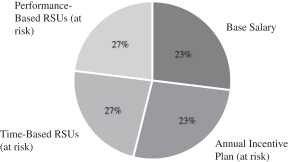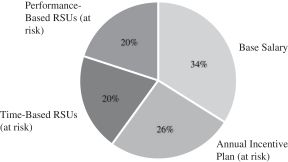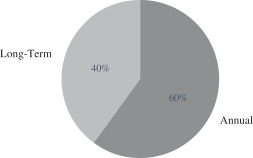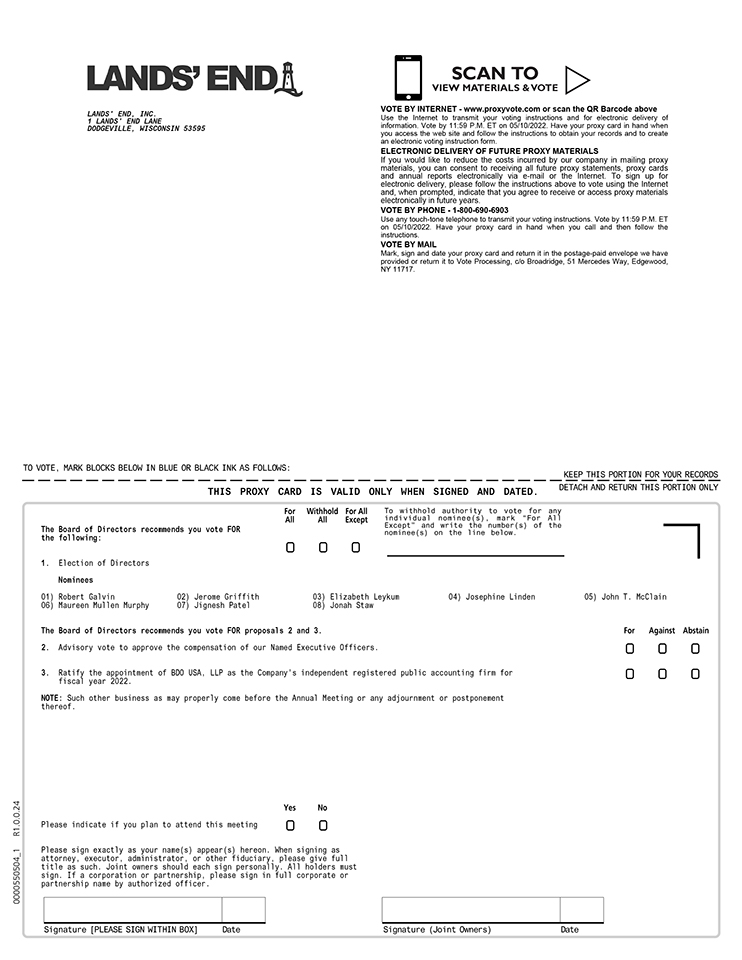

March 29, 201931, 2022
To our Stockholders:
I am pleased to invite you to attend the 20192022 Annual Meeting of Stockholders (the “Annual Meeting”) of Lands’ End, Inc. (the “Company” or “Lands’ End”) on Thursday,Wednesday, May 9, 2019.11, 2022. The meeting will begin at 9:2:00 a.m.p.m. (Central time) inat the Gary C. Comer Activity Center, 3 Lands’ End Lane, Dodgeville, Wisconsin 53595.
Whether or not you plan to attend the Annual Meeting in person, please read the Proxy Statement and vote your shares. Instructions for Internet and telephone voting are included in your Notice of Internet Availability of Proxy Materials or proxy card (if you received your materials by mail).
An admission ticket (or other acceptable proof of stock ownership) and a form of government-issued photo identification (such as a valid driver’s license or passport) will be required for admission to the Annual Meeting. Only stockholders who own Lands’ End common stock as of the close of business on March 11, 201914, 2022 will be entitled to attend the Annual Meeting. An admission ticket will serve as verification of your ownership.
If your Lands’ End shares are held in a bank or brokerage account, you can attend the annual meeting if you bring your Notice of Internet Availability of Proxy Materials or a recent bank or brokerage statement showing you owned shares of Lands’ End common stock on March 11, 2019.14, 2022. You may also contact your bank or broker to obtain a written legal proxy.
Registration will begin at 8:1:15 a.m.p.m. and seating will begin at 8:1:30 a.m.p.m. Use of cameras, recording devices, and other electronic devices will not be permitted at the Annual Meeting.
Sincerely, |
|
Jerome |
Chief Executive Officer |
LANDS’ END, INC. 1 LANDS’ END LANE DODGEVILLE, WISCONSIN 53595














